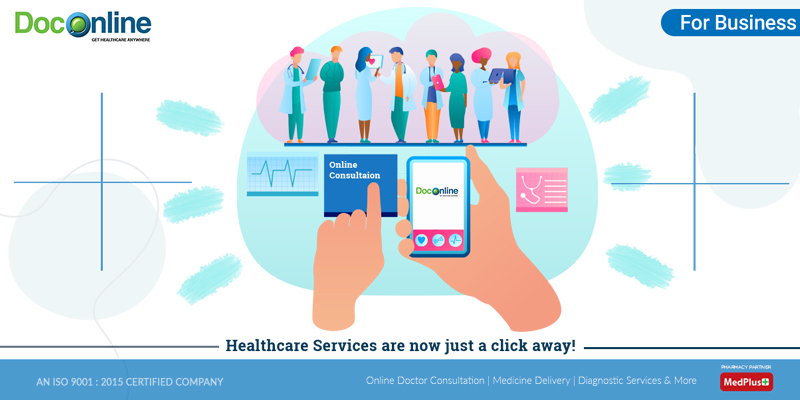Comprehending the Expense Savings of Subscription Based Healthcare for Families
Comprehending the Expense Savings of Subscription Based Healthcare for Families
Blog Article
The Surge of Subscription-Based Health Care and Its Influence On Patient Care
As medical care evolves, the subscription-based design is gaining grip, assuring to change person treatment by offering predictability and accessibility. These models, which bypass typical insurance, could redefine the patient-doctor dynamic, emphasizing preventative and individualized treatment. As with any technology, they provide challenges, particularly worrying equitable gain access to for all socioeconomic groups. The possibility for these versions to improve health care shipment raises pressing questions regarding their lasting sustainability and inclusivity. Are these membership services the future of health care, or do they risk leaving susceptible populations behind? The ins and outs of this change warrant a better exam.
Understanding Registration Health Care Models
Grasping the idea of registration health care versions includes examining a transformative technique to clinical services that highlights price and availability. These versions, often described as straight medical care (DPC) or concierge medicine, have actually arised as cutting-edge options to standard fee-for-service healthcare systems. Subscription healthcare enables individuals to pay a fixed regular monthly or annual fee for a specified set of medical services, which may consist of unrestricted workplace brows through, routine exams, and standard laboratory tests, without the need for typical insurance policy billing.
The framework of membership medical care versions is developed to simplify client care by getting rid of third-party payers and complicated payment codes, therefore reducing management burdens. Doctor can concentrate a lot more on individual treatment, fostering more powerful patient-provider connections. This version likewise promotes preventative care by motivating regular visits, as the financial challenge of per-visit fees is gotten rid of.
The registration design frequently equips medical care suppliers to manage smaller sized person panels, permitting even more customized care. It straightens monetary rewards with individual health outcomes, as companies are inspired to preserve person complete satisfaction and health. In general, understanding registration health care versions requires identifying their potential to improve how care is provided and accessed.
Benefits for Patients and Carriers

With a consistent income stream, medical care professionals can dedicate more time to each individual, leading to a much more extensive and customized treatment experience. The emphasis on precautionary care within registration plans can lead to far better client end results and decreased lasting medical care expenses.
Worries and difficulties
While subscription-based health care versions present numerous benefits, they additionally come with a set of difficulties and problems that need to be addressed. First, access continues to be a considerable issue, as these models frequently target individuals that can afford month-to-month fees, potentially omitting low-income populations. This elevates ethical inquiries concerning equitable access to medical care services. Furthermore, the different nature of registration strategies can lead to confusion amongst people relating to coverage specifics, possibly resulting in unmet expectations or inadequate care.
Financial sustainability of subscription-based versions is one more worry. Suppliers must balance the set earnings from memberships with the variable expenses of health care solutions, which may fluctuate due to unexpected clinical requirements. This can develop stress to limit solutions or rise costs, possibly influencing client satisfaction and care high quality.
In addition, regulatory oversight of subscription-based health care designs is still developing. The absence of standardized structures can result in irregular solution top quality and responsibility, complicating efforts to ensure client protection. The combination of technology-- usually a keystone of these versions-- elevates concerns regarding information privacy and safety and security, as delicate client details could be susceptible to violations. Resolving these difficulties is essential for the effective and fair execution of subscription-based healthcare.
Effect On Patient-Doctor Relationships
One considerable effect of subscription-based health care designs on patient-doctor relationships is the potential for boosted continuity and customized care. By taking on a registration model, doctors can manage a smaller sized patient panel, enabling even more devoted time with each person. This increased availability fosters a much deeper understanding of a patient's site case history, way content of living, and preferences, making it possible for much more customized treatment plans and interventions.

Nonetheless, it is necessary to acknowledge that while subscription-based versions might profit those who can afford them, they might inadvertently broaden medical care variations. People who are incapable to join these versions might experience reduced access to customized care, potentially impacting their connections with doctor. Thus, while the membership version provides promising benefits for patient-doctor partnerships, it likewise poses challenges that require to be addressed to ensure fair medical care gain access to.
Future of Health Care Accessibility

The role of modern technology can not be ignored in this improvement. Telemedicine platforms and digital health and wellness documents promote seamless interaction in between patients and health care suppliers, breaking down logistical and geographical obstacles. Furthermore, innovations in expert system and data analytics can better individualize healthcare by forecasting individual requirements and enhancing therapy plans.
Nevertheless, the future of health care accessibility also offers obstacles, such as guaranteeing equity across different socio-economic teams. Policymakers and health care companies have to work together to connect the electronic divide, making certain that subscription-based models stay inexpensive and Read More Here inclusive. As these systems mature, they hold the guarantee of making healthcare much more easily accessible, efficient, and patient-centric.
Conclusion
Subscription-based health care versions are improving person treatment by supplying a stable expense structure and enhancing accessibility. These versions enhance patient-provider connections through customized care and routine gos to, emphasizing preventative health and wellness. Regardless of these benefits, difficulties such as ease of access problems for low-income populaces and the need for equitable healthcare services continue. The rise of subscription-based healthcare encourages positive individual engagement, which has the potential to boost individual results and fulfillment, signaling a transformative shift in healthcare delivery.
As medical care evolves, the subscription-based model is acquiring grip, assuring to transform individual care by using predictability and accessibility.Subscription-based health care models supply distinct benefits for both people and companies, improving the general medical care experience.As medical care systems develop, the future of healthcare gain access to regularly pivots on the integration of innovative models and modern technologies.Subscription-based health care designs are reshaping client treatment by providing a steady price framework and boosting accessibility. The rise of subscription-based health care encourages proactive client interaction, which has the potential to boost client end results and contentment, indicating a transformative shift in healthcare distribution.
Report this page